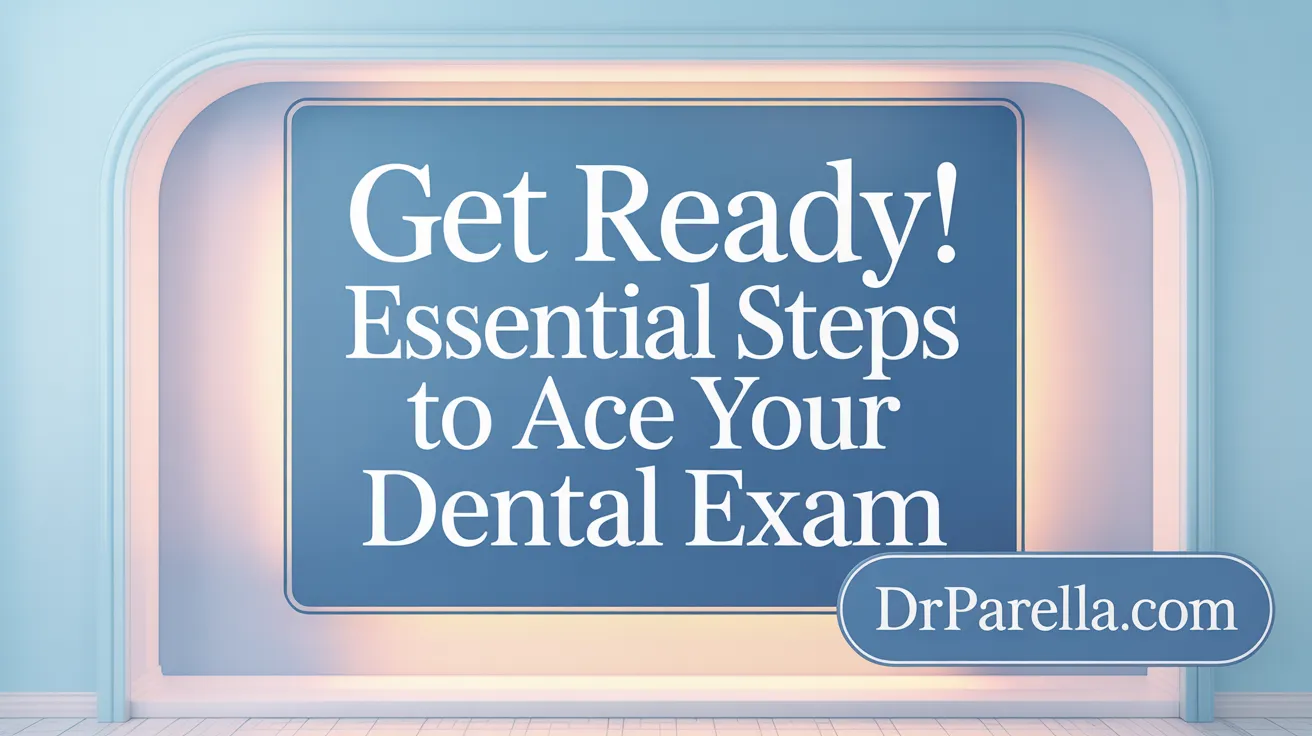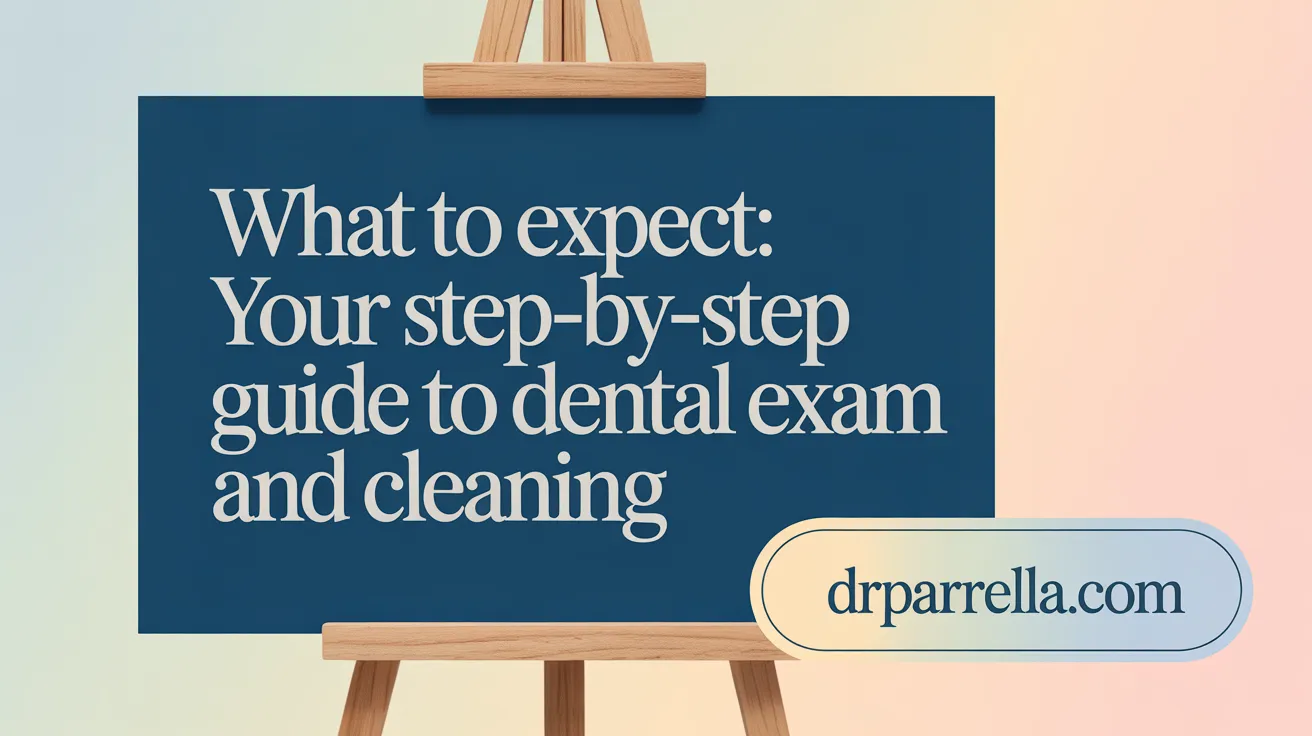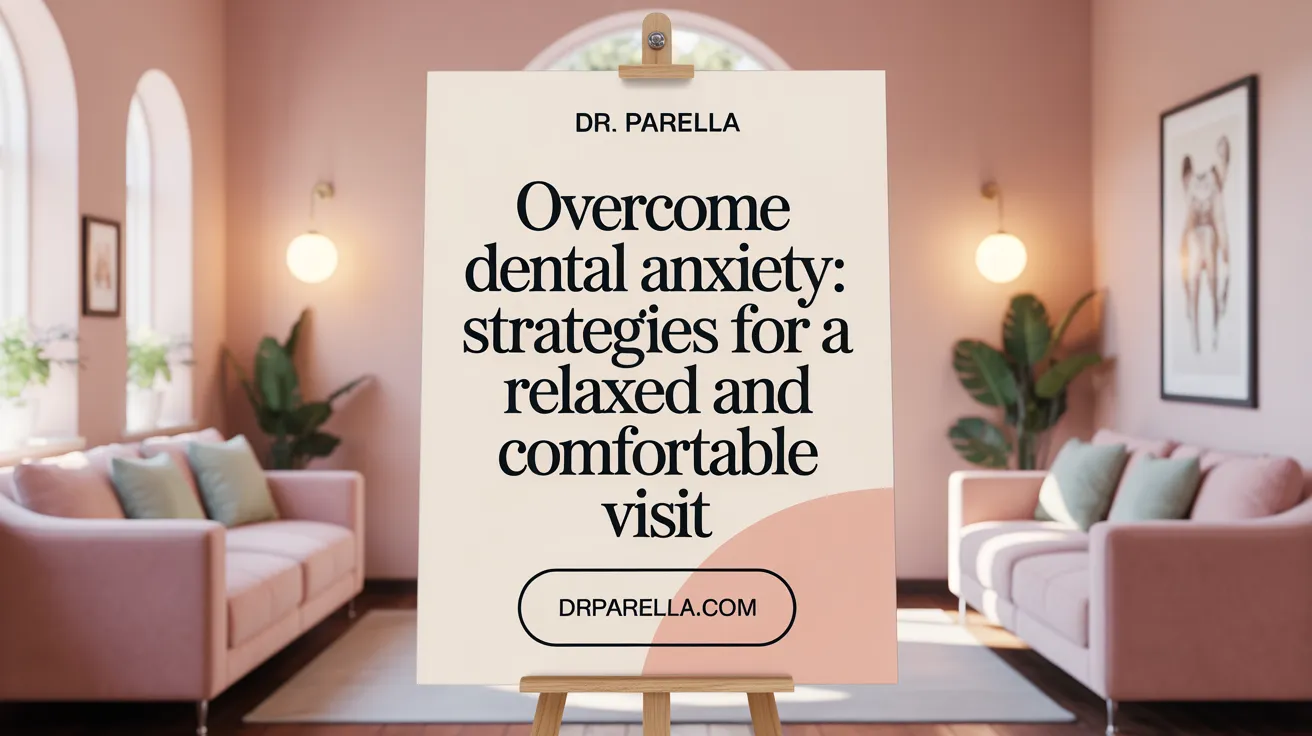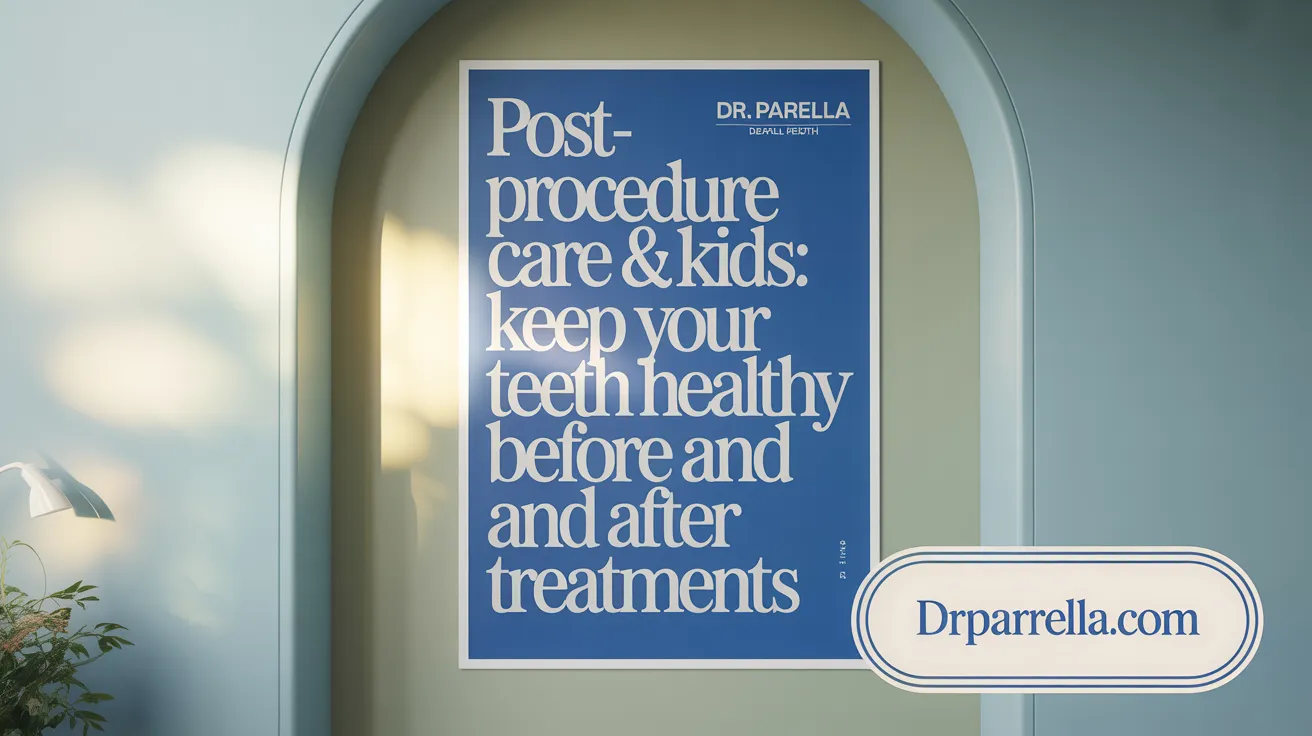Getting Ready for a Dental Visit
Preparing for your next dental exam can make a significant difference in ensuring the visit is smooth, comfortable, and effective. Understanding what to expect, how to care for your teeth before and after the appointment, and managing any anxiety related to dental visits are key components to maintaining excellent oral health. This article offers top tips and essential information to help you approach your dental exam with confidence.
<!-- VIDEO:eyJsaW5rIjoiaHR0cHM6Ly93d3cueW91dHViZS5jb20vd2F0Y2g/dj1URGNmdFJRQ184YyIsImltYWdlVXJsIjoiZGF0YTppbWFnZS9qcGVnO2Jhc2U2NCwvOWovNEFBUVNrWkpSZ0FCQVFBQUFRQUJBQUQvMndDRUFBa0dCd2dIQmdrSUJ3Z0tDZ2tMRFJZUERRd01EUnNVRlJBV0lCMGlJaUFkSHg4a0tEUXNKQ1l4Sng4ZkxUMHRNVFUzT2pvNkl5cy9SRDg0UXpRNU9qY0JDZ29LRFF3TkdnOFBHamNsSHlVM056YzNOemMzTnpjM056YzNOemMzTnpjM056YzNOemMzTnpjM056YzNOemMzTnpjM056YzNOemMzTnpjM056YzNOLy9BQUJFSUFGTUFsQU1CSWdBQ0VRRURFUUgveEFBYkFBQUJCUUVCQUFBQUFBQUFBQUFBQUFBR0FBRURCQVVDQi8vRUFEZ1FBQUlCQXdJREJRUUlCZ01BQUFBQUFBRUNBd0FFRVFVaEVqRkJCaE5SWVhFaU1rS0JGR0p5a2FIQjBmQVZJek5Tc2ZGRGdxTC94QUFaQVFBQ0F3RUFBQUFBQUFBQUFBQUFBQUFBQXdFQ0JBWC94QUFpRVFBQ0FnSUNBd0FEQVFBQUFBQUFBQUFBQVFJUkF5RUVNUkpCVVJNak1nWC8yZ0FNQXdFQUFoRURFUUEvQU5lTCttdnBVZzNxS0grbXZwVlBYdFFiVE5LbXVJeG1ZNFNJWXpsenNQMStWTk05R2QyaDdUQ3lrYXkwL2hlNlVmekpEdXNYbDVtZzI0RnplVDk3ZFR5enlOMWRzNDlQRDVWTGIyVWdQSE94NDIzYk83RStOWGdGalhZQWVacGJrTVVTa2xpQW1Xd0tjMnFjUEVYUlZ6akoycDBFMTlQM2NXU25UejgvU2liVGRENDR1R2ZoNFNOeHpwVXNsRDQ0ckJkOVBjcHhvRmtYeFd0SFJlMFY1cFRySE16M05wbkRSdWNzbjJUK1Ziay9aZVNOUTJuWFRJNCtCeGxXOGpXUmRXTFNFcE5GM055dXpBNzcrdlVIeG9qbCtrendhMEhsdFBEZFc4ZHhieUI0cEJ4S3dxV2hIc1hjTkJkVGFld1lSeUF5SXArQng3dytmUDVVWFU5T3pOVkNweFRVNDhha2dldTBHMWNWMHB4UUJJUnRVZGRGc2l1S0NSNlJwVXFBS2wzL0FGRit6U3BYbjlSZnMwcWl3SUlRQkdwT3dDNW9WdkwyYlU3MXhJM0RBakh1NHgwOC9NMXVSNmhhc2ZvbjBxTHZXVGg0QzJEdVAzdFFxN21DK0tzTUZYM0ZFMDZJaDJTWFBEQ3A0UmlzVzR1VEl4alE4K1pyWDFjNGc0dWxEYXQvTGtjOVR3ajUwa2Vsc0wrejFxSVlFa0k5dVFjL0tpeTAyQW9VYTZrZ2hYdWpERXFZQmttTzNvQUsyTkgxRjVRb25FZkxab3pzZnZyUEt6WkVKb1ZxaDJnMDlab1BwU0wvQURJUVMzMWs2L3I4cW52Wlo0TE15eFNSeEtGeVpIR2NlZzYxVzBXOU40RzRMNzZVQ1BiamVQaElIaXRWUllINFkyaDFTd3VJaHViZ0pJUjF5Q00vZFJYbXNDM3hieXB4RElSdHdmTDkvaFc5MXpXckJLNDBZYzhhbFoxbWxtbXpUVThRZFYwRFhBYXVsOGFDVHVtTk9LWTBBS25YY2l1YWd2SlFrVFJod2tzaWtSazhnY2N6UUJYV1F5d3hQSTJXSzdueDNOS29YdEowamhqSlVjRVlHeHpTcXBKNWhhM0pabWtrMzR6a2srTlRDNHkvRUpOeDUxQmJSUXZiQlpDUWZFVld1TFpJWWdVZVJwUXh6c09FanA1MTFhcVBWaS9ac1hOMUpjMnhqWkY0anlJMnpXWEVoNFlJbkdDODRCQjlSK3RhOE9zYVRld2QzZTJYOE11UXZzejJTOFVMRWYzUm5jZXFuTlZvSVh2WFJZTGVWNWw5dmdTTXNSamZJeHpGWnA4YUdTTGNkTVlwT0wraFVtbHJlc2pQbGtVSFlIRzlYcm1DTmJtTm80MWpJQ3J3b0FBQVBLbG9qOFRNbWVFam1DTUVWWGVlUjc1aVZaMTRodzQ4SzQ5dm82WGl1d3F2YlJieXdXR1RQRGdkZWROYVcwTVFoQ3A3Y0s4Q0VkQlZpM2tXYUljQkk5bm1mR283Q2ZpTXNjcTRrUmlwODZwWk5HSHEwWGM2aEtQRWh3QjU4L3pyUXNYNDdPTFBOUnduNWJWbDZ4UG50Rk5GblBERkh0NjUvV3IybHRtQjE2cStmdkgrNmJnZFRvUnlGY0xMdElpbFNyWVlSVTROTlNvSkpPS3VoVXRyWnlTN24yUitOYU1kaENGOXZlb3NreVRpczdWNGlZMW1IdXBzM2tQR2laN1dBZjhBSFZPNXRMYVZESEpGbER6QU9LZ0FjanZpaUJKRjR1SFlFK0ZOVnJWdEhzN202RXNrazZrb0JoWDJHS1ZGQWVSSStGWEhoVzVaZG43bThRUE5pMlFqYmkzWS9McFc1cCtqV05tRmVHSGlreG5qa1BFUjZkQldsV2lmTWRWQUZqK2dCZTZmOUNrWkwrRmdUbmhjSDJUNlUybDZ6cVduUm1Td3VwSXloOTNtckR6SEkwVWRyTFlUNlF6Z2UxRXdZZm5RZkptTzNoY0RmbVI0Z2svcFdXV1NiVzJNZ3FlajBQUyswVVdyNllKOVF0MVdjeFlhZURaZ2VSNStkVUZsaHQ1UTB0OUsxczc4Q3ZCQ2NvZkJnZVI1OHNqWTBMYUZmaXp1REh6dDVlV2VoUE1mT2lhenRIRndaYmVRQU91Q0N1YzlmeUZJazk3TnVPZG9JLzR2WldWZ1pZRzFHNVBJTEhHcWtuL3RXbHBNZDFNSUo3K0pJcnFTSlRLaWNnZW56eFdkcElqdDVFTjZna0Q3QjhZQWJ3TldlMStzdm91alRYRUFCdXBBSTR2cWs3WitWS2x2U0x5ZGV3VHZia1Q5cjlTblJ1S05MaUtFWVA4QWFNSDhRYTNOSGxJa2ZIeFJxY0h5L3dCMEdhZUJaYWJISzdFeVNTbVFrbmM0SDYxdWFMZnBKYzl3R3hKdzRBSE1uWS9sVm82bW1oTTErdHBoYUpCOFErZGRBcWVScWdyM1M0ekRJdzgxcnVLNVJ2ZUJVOWMxc1VrekQ0c3VZTlNXNEJuUU4xTlZsZnFqWnA1SkpPQW1NWWtYMmtQbUtzUUVsdGdSWkhXcGxkQjczTEZaV202aEhkUmNVZlA0a1BOVFZsbjJ6VkN4TTdBZ2dWVGtCcXZQcWNVWks1QllkTTFXT3MyNG5TQ2NySEk0eW9MRGNWS0E1dlZQZWo3UDVtbnJxOWYrYU1mMjAxQUE1RjdpK2dxSzhtbWdWVERiOTduM21NZ1ZZeDRuUFQwcVJQY1gwSCtLZzFUSDBHUUU3SEFOTG9zQ1dxNmxQZjNDbllxcHhFRUp4Njcxek5BRzd4Y2V5b1JSVVRTQ09YaXg4V2E0bnV3cGJCNXRuOS9qVVRYd1pqcmRsR05lN3VlN2IzYzRORldqWE15bEZWOHJ5MzZFYkVmdnhvWmlWcHBnUU1zVzR0dndGRXNGeWREczNnYU9PYTV1Rzd6dW5HUWd4c1Q1MUNnOGpVWTlsNHlVRmJOL1ZiMitzZEd1N2lGVWM4SXlNY1dGSjNPRDRWaTN1dUhXT3pvdDdwWEYxR3c0SEsrK1BFK2xaeGU2dWNOUE03L1Z6c1BsVUYzY0Mwajd3cms1d1BXdWxpNE1WQ3NnaWZKZmxjVG5VSjNFTUVVZVBZakdmWG1meHF0SEsyR3d4VnkvRnhnNFAzMWJpVmJ5eUU2QXJJcTVsalBUNncrcWZ3UHlxb0VBT0FjMWpuaVdPVkxvdCtSeld6VjAvdEJyTmtSM04vS3lqNEpUM2cvOVVZYUxya2ZhQU5iWHNjVUdwQVpoa2oyV2ZId2tlTkFjU1ZKeEdNaDFKVmwzQkJ3UWVtUE9xa0I4Q1J1Q1FhbFM0a1huaGg1MWg2VnJ2MDF4SGU4S1hCK01iQ1Evcld2VkxhQ2hwSkRGUDlJZ0pRbjNnT2xiRm5xeGNBU3FHOHhzYXg2NUFLTmxEOHFsU0NqY2xzTEM3bE13a2VPUmh2dnQ5MVY3M3M1RmVLaUdaTUl3WlNVeXc5RG5hcTBGMkFjRTRQclY2TzdYcWRxdW1WYUpMdTNZU0tPSWJMU3FyZVhzWWtVY1I5M29LVlRSVXhZL2NYMEgrS3A2MnhYVDN3Y2JpbFNwYTdMZ25CR2t0NUdraThTbDhFVm1ScUh1dUZ0eGs5YVZLaVhaTUE0MHV4dG9iWjVJNFZESkVYQjU3NDUwSzJydE5JWlptTHlPY3N6SEpKcFVxMmY1L3NyeVBSclc0SER5cDVFVTh3RFQwcTZSbklaRDNEUnlSWVZndzZlT1FSNllxdmV4SkRxTjFGR3VFU1oxVWM4QUU0cHFWYy9tZjJoMlBvZEs0ZjNxVktzZ3c1TkYzWjI0bHVOT3pNNWNxNVVFODhDbFNxakpOT2xTcFZVQm1WV1hjWnBvdmV4MHBVcXRFaGpYSHZqMHBVcVZYS24vMlE9PSIsInRpdGxlIjoiSG93IHRvIFByZXBhcmUgZm9yIGEgRGVudGFsIEFwcG9pbnRtZW50IHwgVGlwcyBmcm9tIGlTbWlsZSAuLi4iLCJzbmlwcGV0IjoiR2V0dGluZyByZWFkeSBmb3IgYSBkZW50YWwgYXBwb2ludG1lbnQgY2FuIHNvbWV0aW1lcyBmZWVsIGEgYml0IG92ZXJ3aGVsbWluZywgYnV0IHByZXBhcmF0aW9uIGNhbiBtYWtlIHRoZSBleHBlcmllbmNlIG11Y2ggc21vb3RoZXIgYW5kIC4uLiJ9 -->How to Prepare Effectively for Your Dental Exam

How should I prepare for a dental exam?
Proper preparation can make your dental visit smoother and more effective. Start by maintaining oral hygiene best practices—brush your teeth at least twice a day with fluoride toothpaste effectiveness and a soft-bristled toothbrush. Floss daily to remove food particles and plaque from between your teeth, and consider using mouthwash for oral health to help reduce bacteria.
It is also advisable to avoid consuming foods to avoid before dentist visit, such as coffee, red wine, or very hot or cold items, especially if you’re about to have a cosmetic or restorative procedure.
Bring along relevant documents such as previous dental records, a list of current medications, and your health insurance information. This provides your dentist with a comprehensive view of your dental and medical history, helping to tailor your care.
Plan to arrive early for your appointment. This allows time for check-in, completing paperwork, and a few moments to relax before the exam begins. If you experience dental anxiety, inform your dentist beforehand; they can offer sedation options or techniques to help you feel more comfortable.
For those with health considerations like pregnancy or specific medical conditions, follow your dentist’s instructions about oral hygiene before dentist appointment and medication use before dental procedures. Overall, being prepared and communicative ensures a productive and stress-free dental exam, helping you maintain optimal oral health.
Understanding What Happens During a Dental Exam and Cleaning

Step-by-step dental exam procedures
A thorough dental examination process begins with a review of your dental and medical history. The dentist will then conduct a visual inspection of your teeth, gums, tongue, cheeks, and soft tissues to check for signs of decay, gum disease, or other abnormalities. During this process, the dentist may also evaluate your bite and jaw alignment. Diagnostic tools, such as digital X-rays, are often used to uncover issues not visible to the naked eye, including hidden cavities, bone loss, or impacted teeth. These images provide a detailed view of your oral structures, aiding in accurate diagnosis and treatment planning.
Role of dental hygienist
A key part of the dental visit is the professional cleaning performed by a dental hygienist. This cleaning involves scaling, where plaque and tartar are carefully removed from all tooth surfaces and below the gum line. The hygienist then polishes your teeth to remove surface stains and smooth the enamel. They may also perform professional flossing to ensure all interdental areas are clean and rinse your mouth. Sometimes, fluoride or sealants are applied to strengthen your teeth against decay. The hygienist’s role is vital in maintaining your oral hygiene and preventing future dental issues.
Use of X-rays and diagnostic tools
X-rays are a common component of a dental exam, especially if it has been more than six months since your last set. Digital X-rays involve low radiation exposure and provide detailed images of your jawbone, roots, and incoming teeth. These allow the dentist to detect problems such as cavities between teeth, infected roots, cysts, or bone support issues early enough for effective intervention. Additional diagnostic tools like intraoral cameras can help you visualize areas of concern, making it easier to understand your oral health status.
Oral cancer screenings and other assessments
Part of a routine dental exam includes screening for oral cancer. The dentist will visually inspect your mouth, throat, and neck for any suspicious lesions, sores, or lumps. Some clinics may use special lights or dyes to identify abnormal tissues that require further investigation. Besides, the dentist assesses gum health by checking for signs of inflammation or recession, and examines your bite and jaw joint (TMJ) for any issues that could cause discomfort or functional problems. Early detection during these assessments can lead to more effective treatment and better overall health.
| Aspect | Description | Additional Notes |
|---|---|---|
| Visual Inspection | Teeth, gums, soft tissues | Looks for signs of decay, disease, abnormalities |
| X-rays | Hidden issues detection | Cavities, bone loss, impacted teeth |
| Cleaning | Tartar removal, polishing | Performed by hygienist, essential for oral hygiene |
| Oral Cancer Screening | Mouth and neck exam | Early detection of oral cancer |
| Additional Assessments | TMJ, bite, gum health | Ensures overall oral function and health |
By understanding these procedures, patients can better prepare and participate actively in their oral health care, leading to healthier teeth and gums in the long run.
Oral Hygiene Best Practices Before Your Appointment
Effective oral hygiene practices before a dental visit can make the appointment easier, quicker, and more comfortable. The foundation of good pre-appointment care is brushing twice daily. Use a fluoride toothpaste and a soft-bristled toothbrush, positioning the brush at a 45-degree angle toward your gums. This technique helps remove plaque and bacteria along the gum line, reducing the risk of gingivitis and periodontal issues.
In addition to brushing, flossing daily is crucial. Use gentle, C-shaped strokes to clean between each tooth and beneath the gumline, removing food particles and plaque that brushing can't reach. This step not only enhances overall cleanliness but also helps prevent cavities and gum disease (Dental exams importance).
Don’t forget your tongue—brushing or using a tongue scraper regularly can significantly reduce bacteria and freshen your breath (oral hygiene best practices).
Using an antibacterial mouthwash that is alcohol-free can further help in reducing harmful bacteria, plaque buildup, and bad odor. This step can boost your oral health and prepare your mouth for the cleaning process.
Timing is also important. Avoid eating or drinking (except water) for at least five hours before your appointment. This prevents food particles from lodging in your teeth, which can interfere with cleaning and cause discomfort.
Maintaining these good habits along with routine dental visits ensures optimal oral health, minimizes the risk of infection or complications, and results in a smoother, more effective dental examination.
Managing Dental Anxiety and Ensuring a Smooth Visit

How can I reduce nervousness and manage anxiety related to dental visits?
Reducing dental anxiety involves several practical strategies. First, openly discuss your fears with your dentist. This allows the dental team to tailor their approach, such as using gentle techniques or sedation if necessary (Managing Dental Exam Payments, Managing dental anxiety, Sedation options for children).
Relaxation techniques are highly effective. Deep breathing exercises, guided imagery, or listening to calming music during the appointment can help you stay relaxed (Reducing Dental Appointment Anxiety, Managing dental anxiety).
Creating a soothing environment also eases stress. Soft lighting, calming scents, and distraction tools like videos or audiobooks keep your mind occupied (Using distractions during dental visit, Dental visit relaxation techniques).
Throughout the visit, use signals such as raising your hand to communicate discomfort or anxiety, which helps you feel more in control (Helpful Hints for Dental Exams).
For severe anxiety, sedation or medication options might be appropriate. Working with your dentist ensures the best approach tailored to your comfort (Sedation options for children, Discuss sedation options).
What important steps can ensure a smooth and effective dental visit?
Preparation is key. Brush and floss your teeth before the appointment to make cleaning easier and more effective (Brushing and flossing before dentist, Oral hygiene before dental appointment).
Arrive early to fill out paperwork, settle in, and minimize last-minute stress. Bringing necessary documents, like insurance cards and medical histories, helps streamline the process (Arriving early for dental appointments, Bring previous dental records, Preparing insurance details).
Good communication is vital. Share any symptoms, dental concerns, or fears with your dentist honestly. This helps your provider customize care and provide reassurance (Dental exam and personal concerns, Discussing dental treatment options).
Confirm your appointment details ahead of time to avoid misunderstandings or delays (Confirm your dental appointment, Verify appointment time and date).
Relaxation practices, such as deep breathing or listening to music, can significantly improve your comfort (Tips for a stress-free dental checkup, Managing dental anxiety).
Maintaining good oral hygiene habits and scheduling regular checkups also prevent dental issues and contribute to a more positive experience during visits (Importance of regular dental checkups, Routine dental checkups, Scheduling dental appointments).
Special Considerations: Caring for Teeth Around Procedures and Preparing Children

How should I care for my teeth before and after dental procedures?
Proper dental care around procedures is essential to promote healing and long-term oral health. Before a dental procedure, maintain your usual oral hygiene routines by brushing twice daily with fluoride toothpaste and flossing daily to remove plaque and bacteria. Follow any specific instructions your dentist provides, such as avoiding eating or drinking (except water) at least 5 hours prior if advised, especially for surgeries requiring anesthesia. These steps help reduce infection risk and prepare your mouth for the procedure.
After the treatment, it’s important to adhere to your dentist’s post-procedure care advice. This typically includes eating soft foods like yogurt, mashed potatoes, or smoothies to avoid irritating the area. Managing pain with prescribed medications, if given, and avoiding hard, crunchy, or chewy foods helps facilitate healing. Good oral hygiene—gentle brushing and flossing—should be resumed once the area heals. For denture wearers, daily cleaning with gentle denture cleaners, handling with care, and removing dentures at night keep oral tissues healthy and comfortable.
Overall, maintaining excellent oral hygiene, staying hydrated, and following your dentist’s guidelines ensure a smoother recovery and help protect your teeth and gums in the long run.
Maintain Your Smile with Confidence
Your next dental exam doesn't have to be a source of stress or uncertainty. By following these comprehensive preparation strategies—including maintaining excellent oral hygiene, understanding the procedures, managing anxiety, and taking special care for procedures or young children—you can ensure your dental visits are productive and comfortable. Regular dental exams and cleanings are essential for sustaining oral health, early problem detection, and preventing costly treatments. Approach your dental care proactively, communicate openly with your dental provider, and embrace these tips to keep your smile healthy and bright for years to come.
